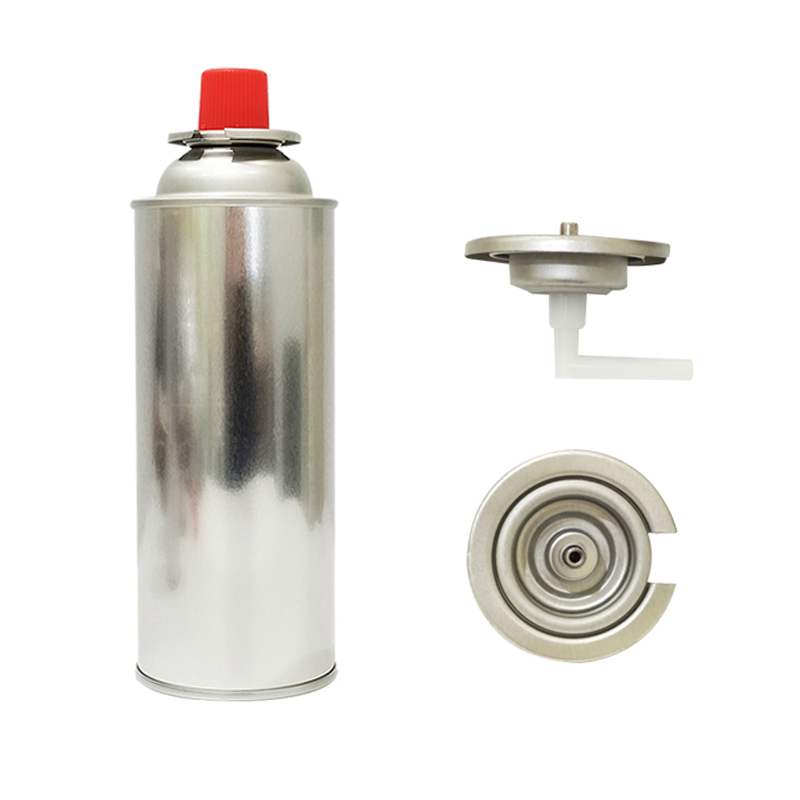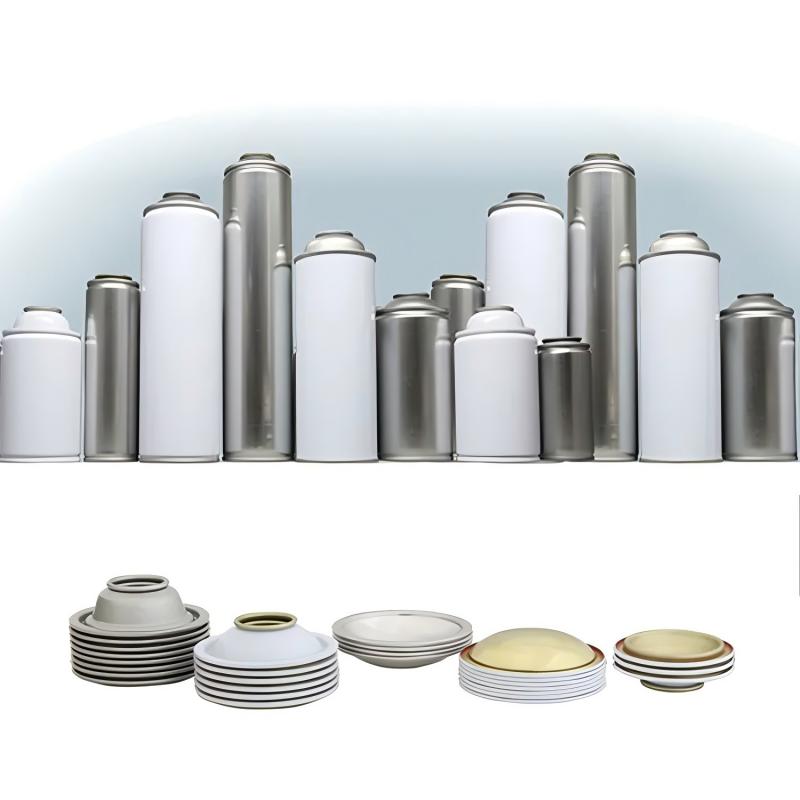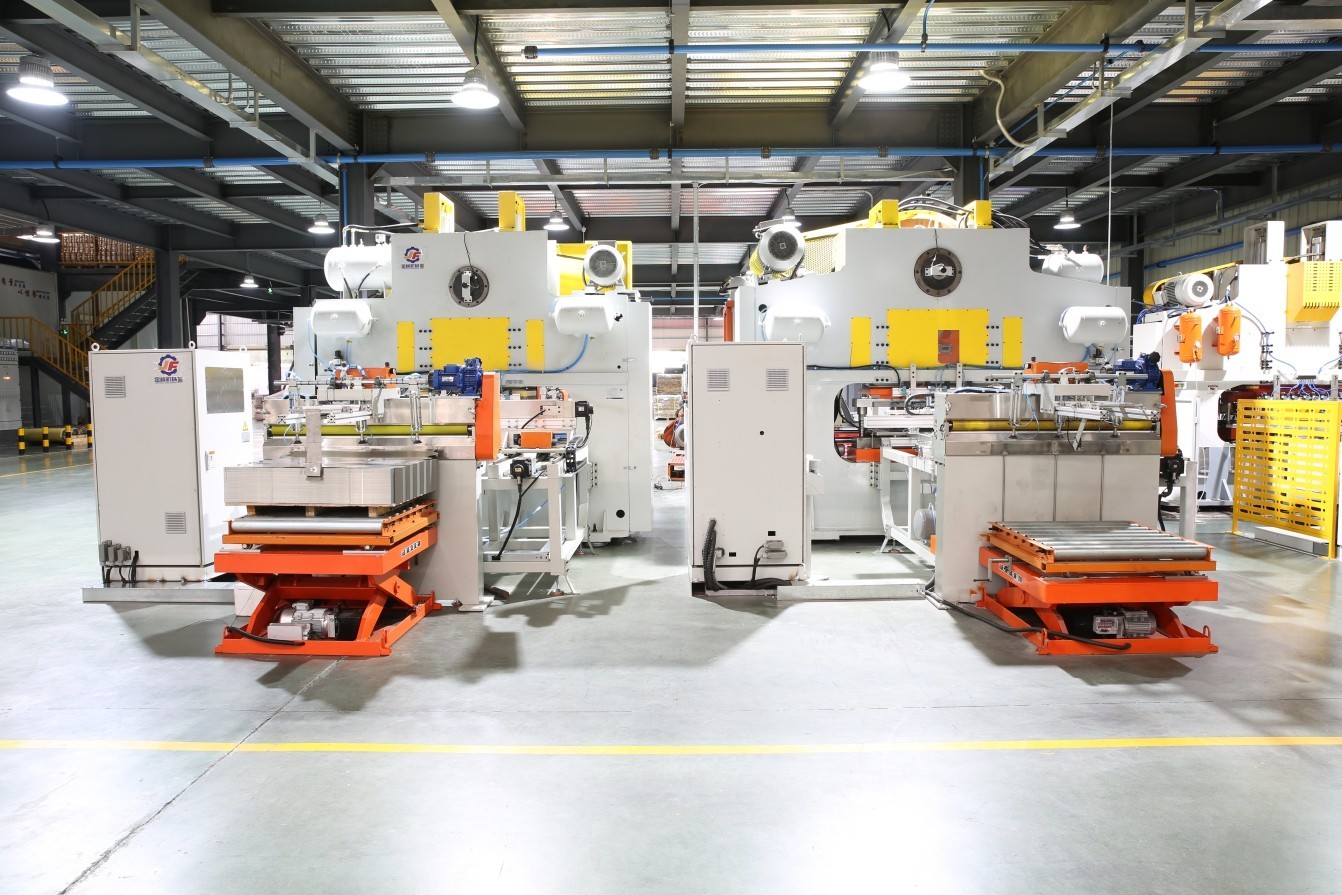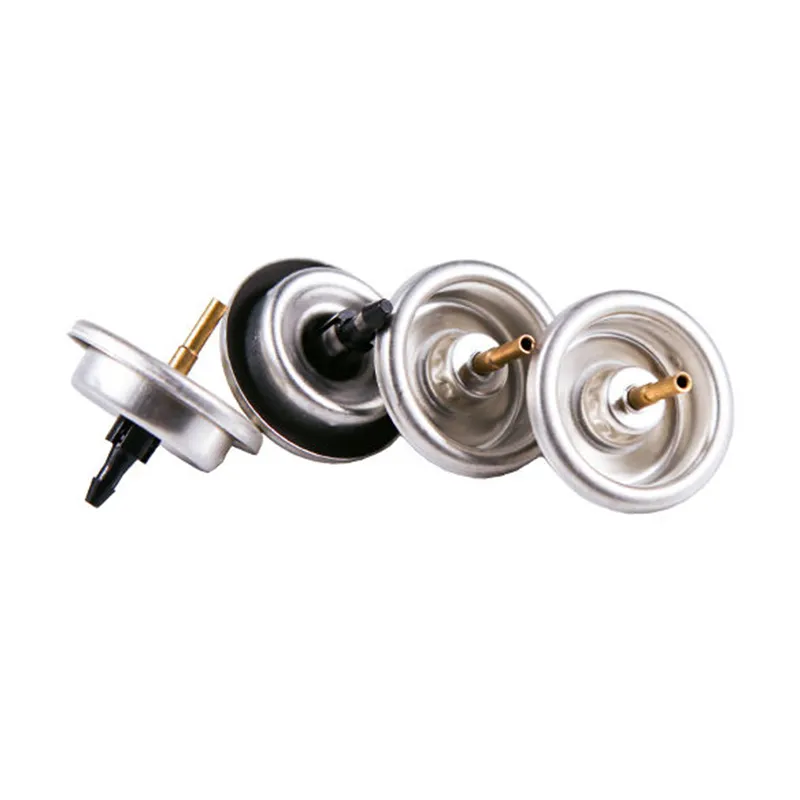Tinplate is a double-sided tin-plated iron sheet. It offers rust-resistance, corrosion resistance, and non-toxicity. It is widely used in the manufacture of metal packaging containers, including food cans, paint cans, chemical cans, and aerosol cans.
In the structure of a tinplate aerosol can, the main body is rolled from printed tinplate sheet, while the key cone and dome form the top and bottom of the can, respectively.
The three-piece structure (can body, cone, dome) is a typical aerosol can design, and its manufacturing process is the focus of this article.

——Tinplate aerosol can: What is three piece can?
——Why emphasize "cones and domes, tinplate aerosol cans"?
The common "three-piece" structure of an aerosol can includes:
1. Cylinder body: The main component, made of printed or coated tinplate;
2. Cone: Located at the top, integrated with the can's hem;
3. Dome: The pressure-bearing structure at the bottom.
These three components work together to form a tinplate aerosol can structure capable of withstanding the high internal pressure.
How are the cone and dome manufactured?
Tinplate aerosol can manufacturing process:
1. Raw material preparation:
2. Printing and coating:
3. Stamping:
4. Dome manufacturing:
5. Dimensional standardization:
6. Quality inspection process:

1. Raw material preparation: How to select tinplate?
The production line first receives tinplate coils. These sheets are pickled to remove the oxide scale, then continuously cold-rolled to control thickness, and tinned for corrosion resistance. The material selection must comply with E 2.8/2.8 standards, with uniform tin plating and an appropriate cold hardening temperature.
2. Printing and Coating: How is the surface treatment of the can body and accessories performed?
Can bodies are typically printed and coated with color (varnish or gold lacquer on both the inside and outside) on tinplate using a printing press to enhance corrosion resistance and visual appeal. Cones and domes are also typically varnished to prevent oxidation.
3. Stamping: How are cones manufactured?
Prepared tinplate sheets are fed into a hemming press line, where they are punched out using an automatic punching machine or sheet feed press line to produce a circular blank.
Multi-stage stretch forming is then performed to gradually extrude the cone structure to the desired diameter (e.g., 45mm, 52mm, 57mm, etc.).
Different diameters correspond to different thicknesses. For reference, the standard thickness for 41mm is approximately 0.28-0.30mm, and for 57mm is approximately 0.30mm, etc.
4. Dome Manufacturing: Why is the pressure-bearing bottom structure arched?
Domes are formed from tinplate discs through die stamping or forging to create an arched or "sunk-down" dome structure to enhance pressure-bearing capacity.
One method is to first punch out a flat sheet and then control the pressure to invert it to form the arched dome structure; alternatively, the dome can be pre-stamped into a complete dome shape.
The dome structure must meet pressure resistance standards, for example, requiring a pressure test of at least 12 bar. Some standards even require 176 psi (approximately 12 bar) or higher.
5. Dimensional Standardization: How can cones and domes be guaranteed to be compatible with tanks?
To ensure interchangeability between tanks, cones, and domes produced by different manufacturers, standardized dimensional standards are necessary.
For example, key parameters such as dimensions A (outer diameter of the closure), B (distance from the top of the valve seat ring to the top of the seal), C (cover height), D (distance from the top of the cover to the can body recess), and F/G/H (inner and outer diameters and contact height of the dome curl) must all be strictly standardized.
6. Quality Inspection Process: How to ensure the quality of tinplate aerosol can components?
· Raw material inspection: Check the tin layer thickness, sheet temper, and thickness uniformity;
· Stamping process inspection: In-line inspection of the shape and dimensional deviation of the cone and dome for each piece;
· Post-production inspection for edge sealing quality, airtightness, and coating integrity before shipment.

What function do the cone and dome perform in tin aerosol cans?
· Cone: Located at the top of the aerosol can, this tapered structure is formed through a stretching process. It integrates with the can body curl and supports the valve assembly, making it a key component in the connection between the can body and the valve.
· Dome: Located at the bottom, it is often an arched structure. It is a critical component that withstands high internal pressure and is designed with a "dome" shape to distribute stress and improve pressure resistance.
Why choose a three-piece structure for tinplate aerosol cans?
Low cost, flexible production, and a wide range of applications. The low manufacturing equipment cost facilitates large-scale production (sihaizg.com.cn).
Different components can be supplied by different manufacturers, and standardized interfaces ensure interchangeability.
Why do the thickness standards for cones and domes of different diameters differ?
As the diameter increases, thicker tinplate sheet is required to ensure structural strength.
Common diameters and corresponding thicknesses: 41mm/0.28 0.30mm, 57mm/0.30mm, 65mm/0.32 0.35mm, etc.
How is surface corrosion treated for cones and domes?
Post-stamping coating: Varnish, gold lacquer, or two-tone lacquer are commonly used to protect the metal from oxidation and facilitate printing of designs or branding information.
Why is the dome designed as a "no-sunken notch" arched structure?
A no-sunken notch dome prevents dust accumulation and improves overall strength. Its thin-walled structure alone can withstand high pressure without deformation or inversion.
How can we ensure consistent standards across all components of tinplate aerosol cans?
Most manufacturers standardize dimensional specifications, particularly for key dimensions of the cone and dome, including outer diameter, contact height, and cap height, to ensure compatibility and consistent production interfaces.

What are the key quality control points in the manufacturing process?
1. Sheet material inspection (tin layer, thickness, and temper)
2. Dimensional deviation control during stamping
3. Coating integrity inspection (internal and external painting)
4. Final airtightness and pressure resistance testing
How do automated production lines manufacture cone and dome components?
Manufacturers use sheet feed press lines, automated stamping equipment capable of high-speed production of cones and domes in various diameters (45-70 mm).
Dekai is equipped with a variety of advanced, fully automated production equipment, including the latest Fuji PRIMEX-P453 four-color UV printing line, a Fuji two-color printing line, high-speed aerosol can production lines, standard can production lines, upper and lower lid production lines, and cutting lines. With an annual production capacity exceeding 100 million pieces, it primarily produces three-piece tinplate aerosol cans.
Why is the market demand for cones and domes for tinplate aerosol cans growing?
Aerosol cans are used in a variety of applications, including industrial sprays, car care, furniture care, air fresheners, and insect repellents.
The three-piece tinplate aerosol can structure offers low manufacturing costs and wide adaptability, making it the preferred packaging choice for a wide range of consumer and industrial products.
What sets your factory apart?
Dekai stands out due to its fully automated production, ISO certification, capacity, and integrated manufacturing. We’re a Guangdong-based factory with advanced FUJI printing lines, aerosol and sheet can production, lid manufacturing, and cutting equipment—all in-house. Our R&D resources and patents enable ongoing innovation.
Customers benefit from one-stop purchasing—raw material to final metal packaging—with consistent quality, low factory prices, fast lead times, and reliable global supply.

